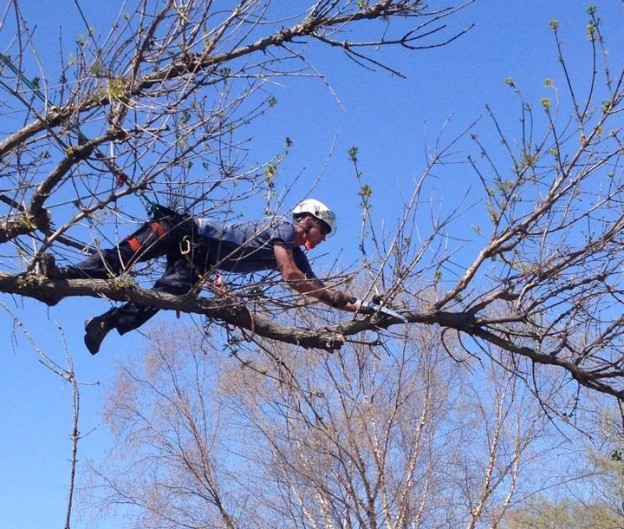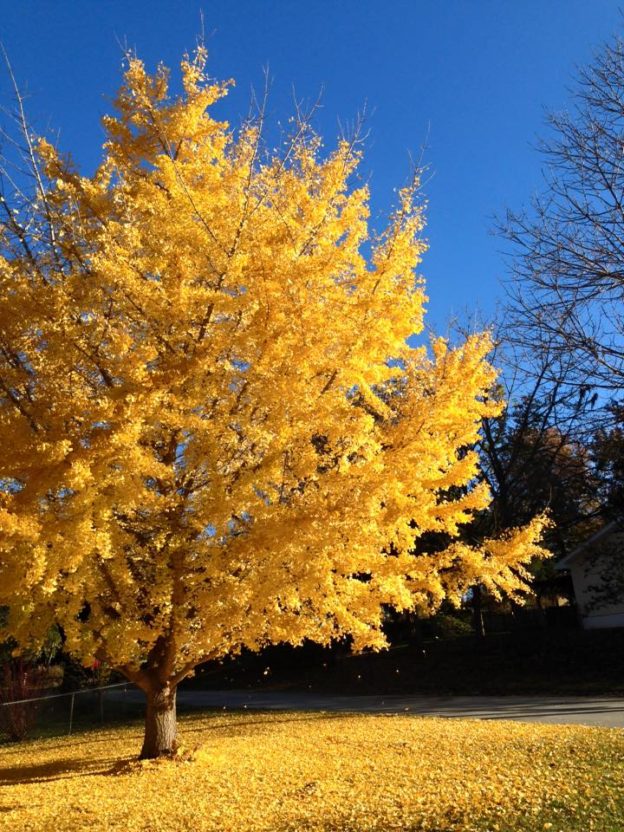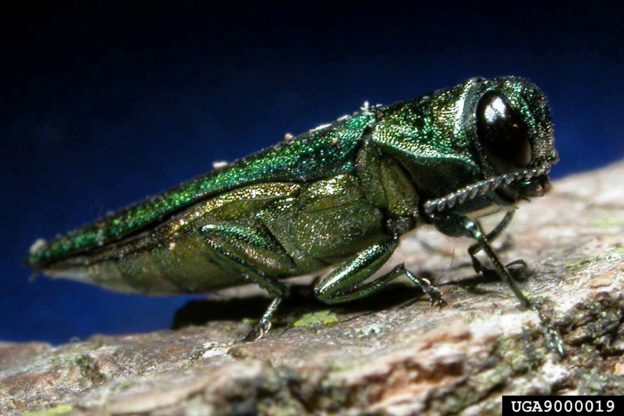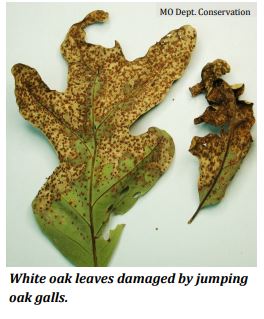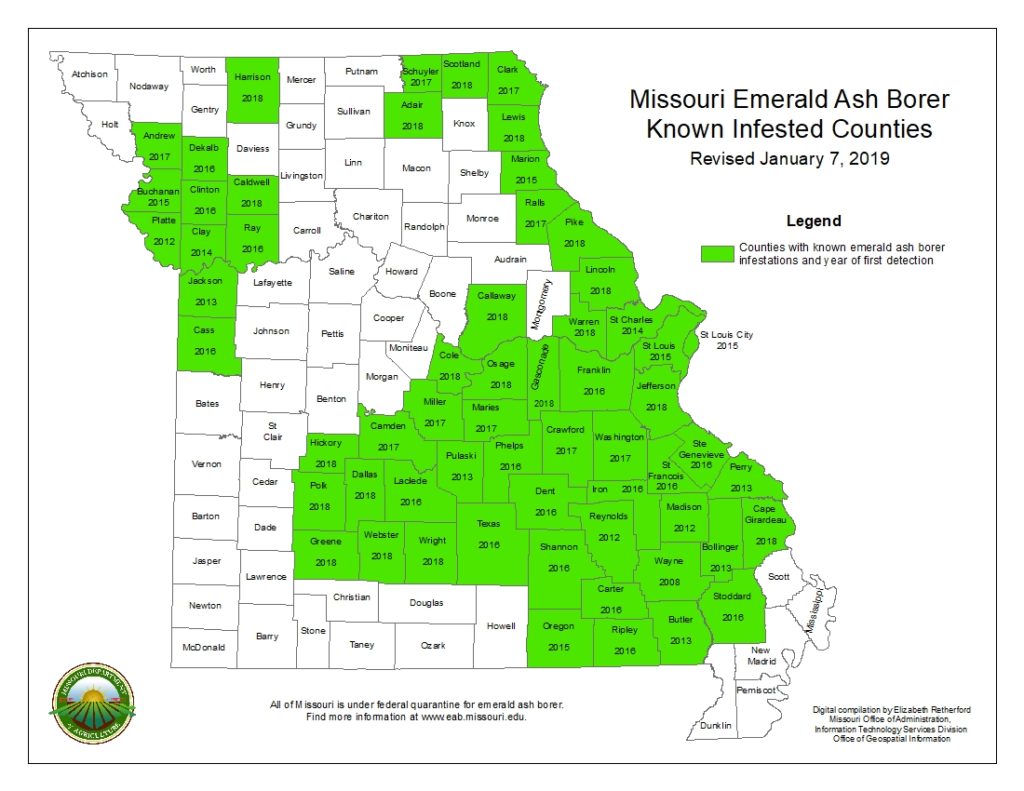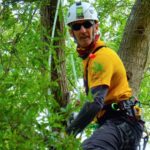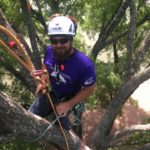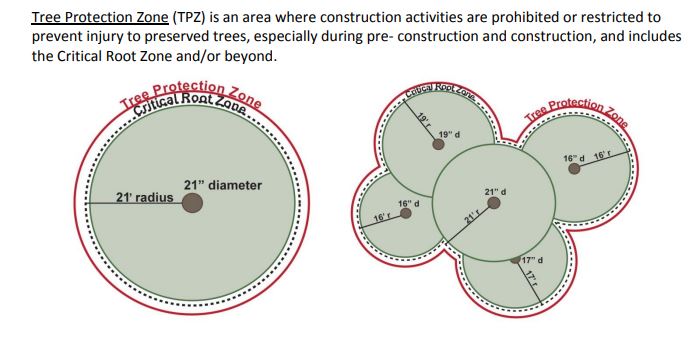The emerald ash borer (EAB) is a serious threat to ash trees in Missouri. This invasive pest will eventually kill unprotected ash trees. Many trees can be saved with the careful use of systemic insecticides. However, not all ash trees should be treated, and for many locations the start of treatments should be delayed.
1. What is emerald ash borer (EAB)?
EAB is an exotic, invasive, wood-boring beetle that infests and
kills ash trees in forests and urban areas.
2. What does EAB look like?
The adult beetle is dark metallic green with a bullet shaped body
that is one-half inch long and one-eighth inch wide. EAB larvae
(immature stage) are flat, creamy-white grubs with distinct bellshaped
body segments. Adult beetles are usually seen from midMay
through July on or near ash trees; larvae are found under the
bark of ash trees during the remaining months of the year.
3. Where did EAB come from?
The native range of EAB is eastern Russia, northern China
and Korea.
4. How does EAB spread?
EAB adults generally fly less than a half mile to mate and lay eggs
on ash trees, making the natural spread of this pest relatively
slow. Humans, however, can easily move EAB long distances in
a short period of time. EAB can hitchhike under the bark of ash
firewood, ash nursery stock, and ash logs and lumber, emerging
from these materials to start an infestation in a new area.
5. When was EAB first discovered in the USA? How did it get there?
EAB was discovered infesting and killing ash trees in the Detroit,
Michigan area in 2002, but researchers estimate it may have been
in that area for ten years prior to the initial detection. EAB was
likely introduced to the US in ash wood used for packing and crating
goods imported from China.
6. Where and when was EAB found in Missouri? How did it get here?
EAB was detected in Missouri in July of 2008. It was found near
Lake Wappapello at the US Army Corps of Engineers’ Greenville
Recreation Area in Wayne County. EAB was likely introduced to
Missouri by a camper bringing infested ash firewood from another
state.
7. Where is EAB now?
Visit eab.missouri.edu to view a current map of Missouri
counties.
8. What is being done about EAB in Missouri?
Several state and federal agencies are responding to the EAB
threat. Field surveys are done annually to look for new EAB
infestations. A statewide quarantine has been put in place
to help slow the spread of EAB. The quarantine prohibits
movement of hardwood firewood, ash trees, untreated ash
material (chips, logs, etc.), and EAB itself from Missouri.
Information about how to respond to EAB and the risks of
firewood movement is being publicized to communities,
industries and the general public. Cost-share funds are
provided to communities to help them prepare for EAB’s arrival.
Stingless wasps that parasitize and kill EAB eggs and larvae
are being released at several locations to establish them as
biological controls to help reduce EAB populations.
9. How can I help slow the spread of EAB?
Don’t move firewood! Inform your friends and neighbors of
the risks of moving firewood. If EAB hasn’t been found in your
county, keep an eye out for it on ash trees and report any
possible sightings to officials. Once EAB is known to be in
your county, consult the EAB Management Guide for Missouri
Homeowners for advice on managing this destructive insect on
your ash trees.
10. Does EAB have any natural enemies?
In North America, EAB is frequently eaten by woodpeckers.
There are also a few species of tiny, stingless wasps that
parasitize EAB eggs and larvae. These wasps have been
released in a few locations where EAB has been detected
to help reduce EAB populations. For more information on
EAB biological control, visit agriculture.mo.gov/plants/pests/
emeraldash.php.
11. Where can I get more information?
Visit eab.missouri.edu or call the EAB Hotline at 1-866-716-
9974 for more information related to EAB in Missouri. Other
websites with valuable information include
emeraldashborer.info and dontmovefirewood.org.
Works Cited:
Extensiondata.missouri.edu. (2018). Emerald Ash Borer FAQ. [online] Available at: https://extensiondata.missouri.edu/Pub/docs/v00001/EABfaq.pdf?_ga=2.45824420.1413572983.1539713852-1962532674.1539713852 [Accessed 16 Oct. 2018].
Extension2.missouri.edu. (2018). Tree Pests: Emerald Ash Borer. [online] Available at: https://extension2.missouri.edu/v1 [Accessed 16 Oct. 2018].
Our Certified Arborists
To view a list of our Certified Arborists, click here!
Please call the office of All About Trees at (417) 863-6214 or fill out a contact request form to schedule an appointment for an estimate.
Phone: (417) 863-6214
Address: 3427 W. Farm Road 146, Springfield, MO 65807

